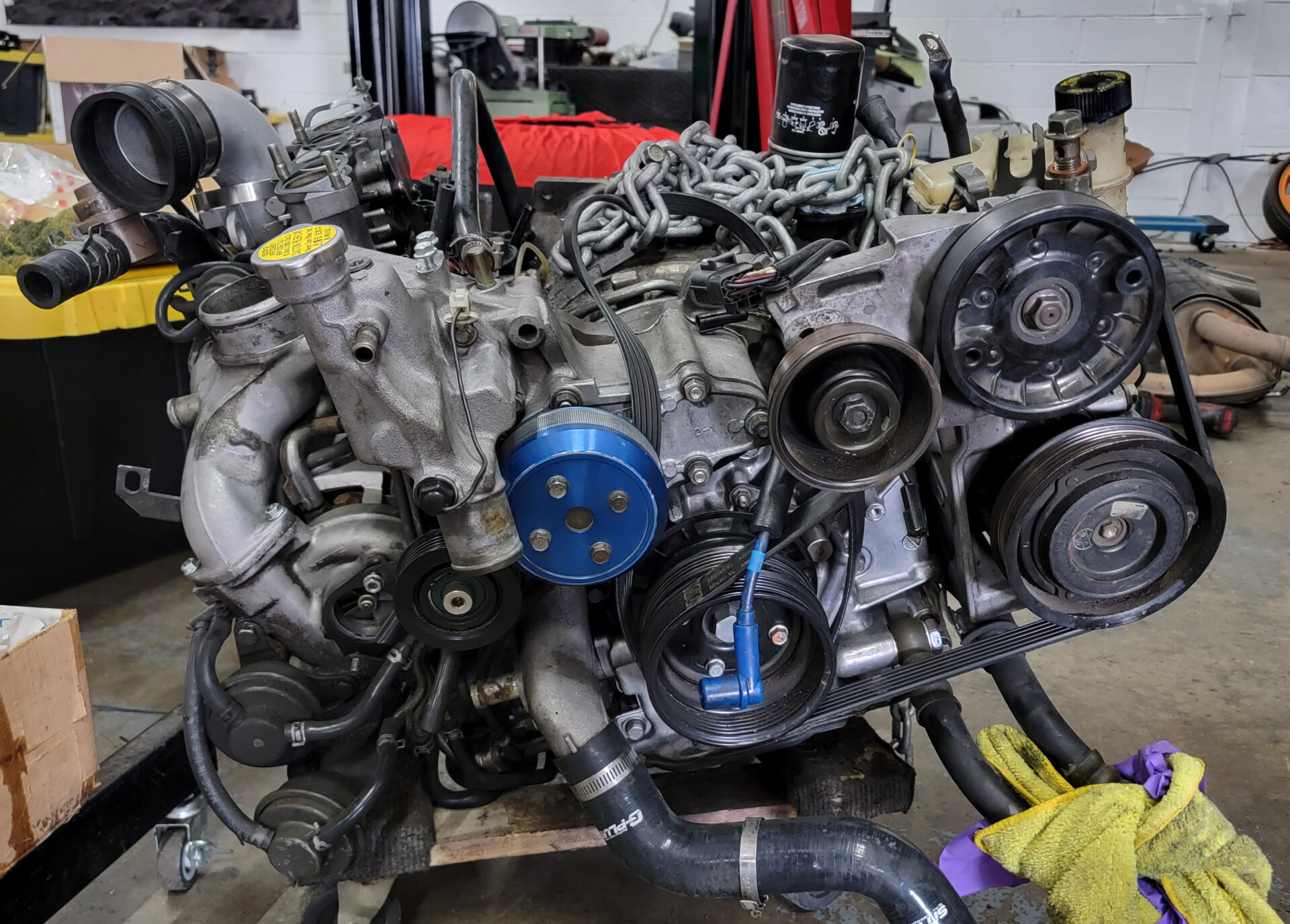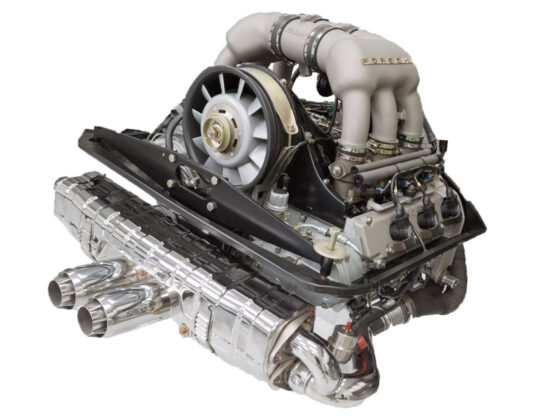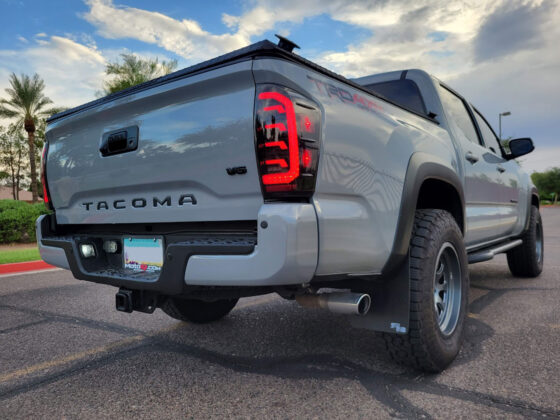 The inlet of the center iron has two oval shaped ports that get air from the lower intake manifold. Peering inside is a fuel distribution plate that the stream of fuel from the injectors hit to help atomize the mixture. Modern fuel injectors do a much better job at atomizing the fuel with their spray patterns.
The inlet of the center iron has two oval shaped ports that get air from the lower intake manifold. Peering inside is a fuel distribution plate that the stream of fuel from the injectors hit to help atomize the mixture. Modern fuel injectors do a much better job at atomizing the fuel with their spray patterns.
 The front and rear irons have much longer and larger “Secondary” ports. The timing of the ports opening and closing are quite a bit different between the primary and secondary ports.
The front and rear irons have much longer and larger “Secondary” ports. The timing of the ports opening and closing are quite a bit different between the primary and secondary ports.
 The big secondary ports feed a lot of air at higher rpm.
The big secondary ports feed a lot of air at higher rpm.
 This is a good visual that shows the secondary port opening as the rotor moves throughout its cycle.
This is a good visual that shows the secondary port opening as the rotor moves throughout its cycle.
 As the rotor moves further, the secondary port opening gets larger and feeds more air and fuel into the combustion chamber.
As the rotor moves further, the secondary port opening gets larger and feeds more air and fuel into the combustion chamber.
 Then the port is completely exposed and flowing as much air as possible into the combustion chamber, before the trailing edge of the rotor starts to close the port. Modifying the shape and size of these ports affects the timing just like a 2-stroke engine. This is where the magic happens for making more power in a rotary engine. But if done wrong, it can hurt the performance and especially drivability of the car.
Then the port is completely exposed and flowing as much air as possible into the combustion chamber, before the trailing edge of the rotor starts to close the port. Modifying the shape and size of these ports affects the timing just like a 2-stroke engine. This is where the magic happens for making more power in a rotary engine. But if done wrong, it can hurt the performance and especially drivability of the car.
Now that our engine is completely disassembled, we can get started with the porting, lightening of the rotors, and many improvements that will make our rotary engine one of the most highly-modified 13B REW engines on the planet. Stay tuned!
SOURCES
BILLY JOHNSON RACING




4 comments
Good luck! so sorry about the fire mishap.
Looking good 😊
I love how this project went from “OEM+ Restomod” to “make our rotary engine one of the most highly-modified 13B REW engines on the planet.”
Yeah, fires, pulling the engine, downtime, boredom, and beers have the effect of changing the strategy. lol.
We originally planned on retaining the stock motor for a while, do a lot of baseline testing and comparisons and then slowly upgrade the fuel system, turbo, and other bolt-on parts. Since the engine was out, we decided to tear it down entirely and go for an extreme build instead.